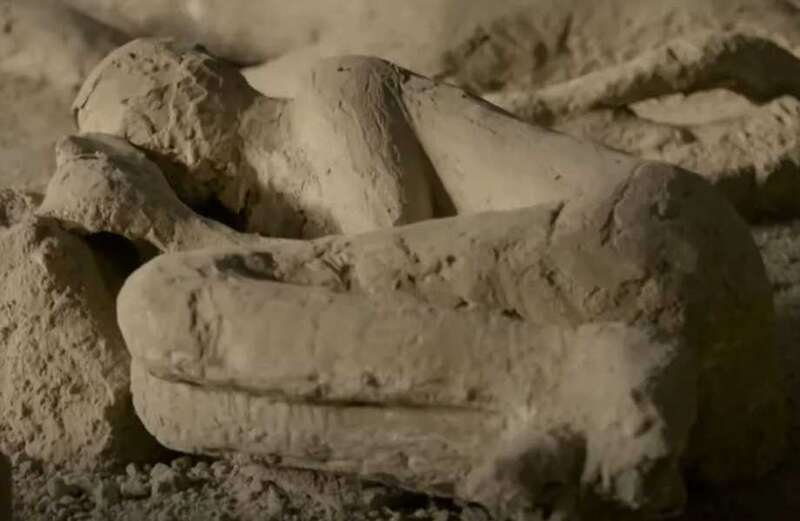ARCHAEOLOGISTS believe they have discovered the "lost" survivors of Pompeii who made it through the horror 18-hour volcanic eruption 2,000 years ago.
It's often been depicted that there were no survivors following Mount Vesuvius' eruption in A.D. 79 but the latest finds suggest that narrative isn't entirely true.




A new PBS documentary titled "Pompeii: The New Dig" looks at how it was increasingly likely that not everyone in the city of Pompeii diminished beneath the relentless onslaught of ash and rock.
In a recently released trailer for the show, archaeologists discover new found ruins in Pompeii that reveal a city frozen in time.
Amongst all the rubble, excavators unearth signs that life continued following the volcanic eruption, suggesting people managed to survive the natural disaster.
 Late Pope lies in state at Vatican as thousands queue to pay respects
Late Pope lies in state at Vatican as thousands queue to pay respects
One man in the trailer for the programme explained how these findings "tripled" what people believed Pompeii's population was.
Described as "the biggest archaeological excavation in Pompeii for a generation", new evidence points strongly towards the possibility that people may have escaped.
The human remains previously found in Pompeii account for only a fraction of its population.
Many objects such as carts and horses, ships, and strongboxes were all missing, leading to theories that some people must have used them to escape.
This alone suggests many people could well have fled in time to survive.
But with it never being a top priority to search for these people, no evidence has been provided to back up those claims.
Now, however, it appears a major breakthrough has been made.
Separate research conducted by PBS also strengthens claims of there being survivors.
Using a method that involved searching for Roman names unique to Pompeii in its surrounding communities following the eruption, evidence of over 200 survivors in 12 cities was located.
These municipalities are primarily in the general area of Pompeii, with it appearing as though most survivors stayed as close as they could to the city.
 Shocking moment tiger mauls circus tamer in front of horrified families at show
Shocking moment tiger mauls circus tamer in front of horrified families at show
Preferring to settle with other survivors, they relied on social and economic networks from their original cities as they resettled, PBS claim.
The report adds that some of the families that escaped apparently went on to thrive in their new communities.
The Caltilius family resettled in Ostia, where they founded a temple to the Egyptian deity Serapis, and members married into another family of escapees, the Munatiuses.
Together, they created a wealthy, successful extended family, it is claimed.
However, things weren't quite as rosy for others who are believed to have escaped.
Fabia Secundina ended up in Puteoli, known to be the second-busiest port city in Roman Italy.
She married a gladiator, called Aquarius the retiarius, but was left in dire financial straits after he died at the age of 25.
Three other very poor families from Pompeii – the Avianii, Atilii and Masuri families – survived and settled in a small, poorer community about ten miles east of Pompeii called Nuceria.
It comes after freshly unearthed, 2,000-year-old, graffiti suggests brutal gladiator battles in Ancient Rome weren't just an adults sport.
Archeologists believe the drawings were made by children as young as five, suggesting they had attended bloody gladiator battles in the city.
Experts believe children were drawing what they had witnessed in an effort to process the trauma of what they saw.




































